Accepted Scientific Name: Mammillaria wrightii Engelm.
Proc. Amer. Acad. Arts 3: 262. 1856
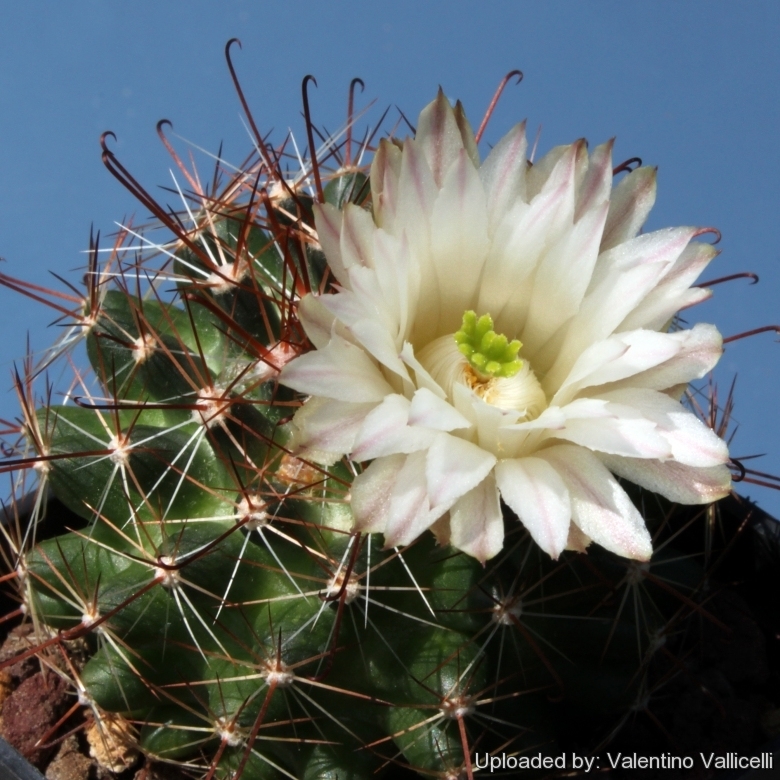
Mammillaria wrightii var. wolfii Photo by: Valentino Vallicelli
GL19 Santa Clara, Chihuahua, Mexico. It is distinguished for its large white flowers, up to 6 cm in diameter.
Origin and Habitat: Village of Yecora and Santa Clara Canyon, Chihuahua, Mexicó
Altitude: Around 1600-2200 metres above sea level.
Habitat: Mammillaria wrightii var. wolfiiSN|12943]]SN|12943]] grows on granite and gneiss rocks in mountainous oak-pine forest often covered in pine needles. Night frost are frequent in winter, and plants are often covered by snow. The plant is very rare in nature and endangered of extinction.
Synonyms:
See all synonyms of Mammillaria wrightii
Description: Mammillaria wrightii var. wolfiiSN|9411]]SN|12943]] is one of the geographical forms of the morphological variable Mammillaria wrightiiSN|12943]]SN|9411]] which distinguishes for its huge, translucent white flowers instead of magenta/purple.
Habit: It is tiny soft-bodied cactus species with short, white dense spines growing parallel to the stem, partially hiding it. Its central spines are few, long, dark and hooked. The stem is simple, usually unbranched.
Stem: Depressed-globose, or (rarely) short cylindrical with age, dull green, 4-10 cm tall, 4-8 cm across, aboveground when expanded during moist periods, but during drought periods the stems become flat-topped and shrink to ground level.
Tubercles: Cylindrical, terete, flaccid, without latex, 10-15 mm long and 3-4 mm wide, with naked axils.
Areoles: Circular about 2 mm broad, with short white hairs, later naked.
Radial spines: Usually 10-14, spreading, acicular, 8-12 mm long, appressed against the stem, slightly downy, lateral ones a little longer white and dark tipped, or the 3 upper ones considerably thicker and shorter, often with darker upper part.
are brownish throughout
Central spines: (1-)2-4 stouter than the radials, sometimes 2 or 3 hooked at apex stiffly spreading 10-12 mm long, dark brown to black in colour.
Flowers: Large for a Mammillaria, and white, up to 6 cm in diameter when expanded. The outer perianth-segments lanceolate, about 12 mm long, externally greenish, prominently fringed; inner perianth-segments lanceolate, to 30 mm long and 4 mm wide, entire, pointed, translucent white often whit a very pale maroon-purple midvein toward the tips. Perianth parts reflexed. Filaments glassy white, rarely pinkish, anthers bright yellow. The style is very pale greenish, supporting 7-11 stigma lobes that are green.
Fruits: Globose or ovoid, usually 25-35 mm in diameter, with translucent purple-green pericarp and a green juicy aromatic flesh.
Seeds: Black, ovate with a ventral hilum.
Phenology: It flowers in summer and fruits during the autumn.
More...Bibliography: Major references and further lectures
1) Robert T. Craig “The Mammillaria handbook: with descriptions, illustrations, and key to the species of the genus Mammillaria of the Cactaceae” E P Publishing, 1945
2) Pilbeam J., “The Cactus file, Mammillaria” 6: 120, Cirio Pub. Services, 01/Dec/1999
3) Pilbeam J., “Mammillaria. A Collector´s Guide” p. 140, 1980
4) Edward Anderson “The Cactus family” Timber Press, Incorporated, 2001
5) David R Hunt; Nigel P Taylor; Graham Charles; International Cactaceae Systematics Group. "The New Cactus Lexicon" dh books, 2006
6) Lüthy JM, “Taxonomische Untersuchung der Gattung Mammillaria Haw.” 1995
7) N. L. Britton, J. N. Rose “The Cactaceae. Descriptions and Illustrations of Plants of the Cactus Family.” Volume 4, The Carnegie Institution of Washington, Washington 1923
8) Albert Michael Powell, James F. Weedin “Cacti of the Trans-Pecos and Adjacent Areas” Texas Tech University Press, 2004
9) Jim Willoughby, Sue Willoughby “Cactus Country: A Friendly Introduction to Cacti of the Southwest Deserts” American Traveler Press, 1998
10) Bravo-Hollis H., “Las Cactaceas de México” 3: 110, 1991
11) Hunt DR, “A new review of Mammillaria names” Bradleya, 1: 116, 1983
12) Krüger W., “Gedanken zum Mammillaria wrightii-Komplex” Mitteilungsbl. des Arbeitkreises f. Mammill.-Freund., 21: 18-19, 1997
More...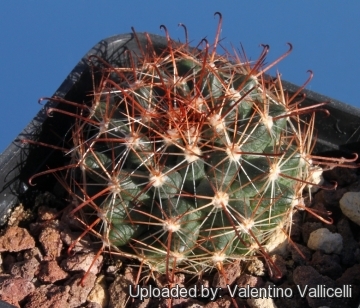 GL19 Santa Clara, Chihuahua, Mexico Photo by: Valentino Vallicelli
GL19 Santa Clara, Chihuahua, Mexico Photo by: Valentino Vallicelli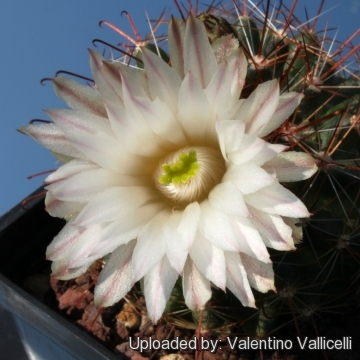 Mammillaria wrightii var. wolfii Photo by: Valentino Vallicelli
Mammillaria wrightii var. wolfii Photo by: Valentino Vallicelli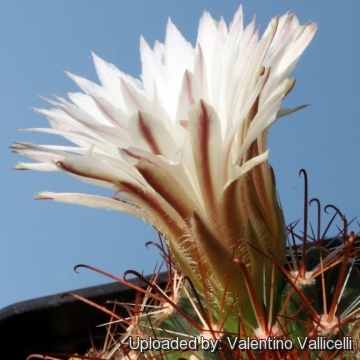 Mammillaria wrightii var. wolfii Photo by: Valentino Vallicelli
Mammillaria wrightii var. wolfii Photo by: Valentino Vallicelli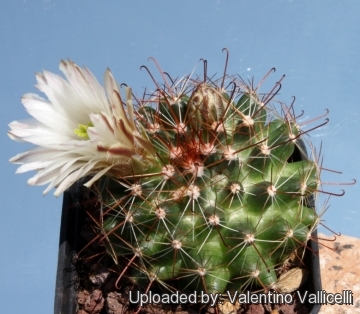 Mammillaria wrightii var. wolfii Photo by: Valentino Vallicelli
Mammillaria wrightii var. wolfii Photo by: Valentino Vallicelli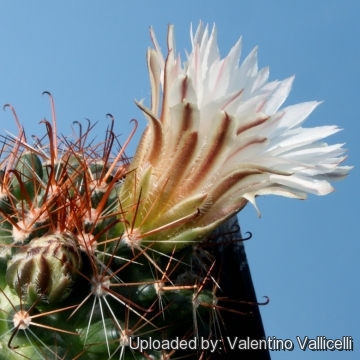 Mammillaria wrightii var. wolfii Photo by: Valentino Vallicelli
Mammillaria wrightii var. wolfii Photo by: Valentino VallicelliSend a photo of this plant.The gallery now contains thousands of pictures, however it is possible to do even more. We are, of course, seeking photos of species not yet shown in the gallery but not only that, we are also looking for better pictures than those already present.
Read More... Cultivation and Propagation: Mammillaria wrightii var. wolfiiSN|12943]]SN|12943]] is a quite cold resistant. It can easily be grown outdoors in areas with minimum winter temperatures of -15° C. It needs full sun to light shade.
Growth rate: Slow growing.
Soils: It likes very porous slightly acidic cactus mix soil with little organic matter (peat, humus).
Repotting: Repotting every 2-3 years, or sooner if the roots get crowded. As it is prone to rot under-pot in a smaller container filled with very porous compost. Use pot with good drainage.
Watering: Water regularly in summer, but do not overwater (very wet-sensitive). Its roots are easily lost in pots that stay damp for any length of time. Keep dry with ample airflow in winter. In the rest period no high atmospheric humidity!! Care must be taken with watering as they tends to become swollen and untidy in growth habit if given too much water and shade.
Fertilization: During the growing season enrich the soil using a fertilizer rich in potassium and phosphorous, but poor in nitrogen, because this chemical element doesn’t help the development of succulent plants, making them too soft and full of water.
Hardiness: It is quite frost resistant if kept dry, hardy as low as -5° C (some reports give it hardy to -15°C or even less, but the frost resistance varies a lot from clone to clone). However some warmth throughout the year will increase the grower's success (minimum 5° C during rest season).
Exposition: Outside bright sun, filtered sunlight or afternoon shade, inside it needs bright light, and some direct sun. High levels of light are needed to flower and for good spine development. Can be sunburned if moved from shade/greenhouse into full sun too quickly. During the spring it may be able to take full sun until the heat arrives at the end of spring. In an area that has hot afternoon sun, it may be able to take full morning sun, but requires afternoon shade or afternoon light shade.
Uses: It is an excellent plant for container growing. It always looks good and stays small. It look fine in a cold greenhouse and frame.
Pests & diseases: It may be attractive to a variety of insects, but plants in good condition should be nearly pest-free, particularly if they are grown in a mineral potting-mix, with good exposure and ventilation. Nonetheless, there are several pests to watch for:
- Red spiders: Sensitive to red spider mite. Overhead watering is helpful in controlling mites.
- Mealy bugs: Occasionally mealy bugs they develop aerial into the new growth among the wool with disfiguring results, but the worst types develop underground on the roots and are invisible except by their effects.
- Scales: Scales are rarely a problem.
- Rot: Rot it is only a minor problem with cacti if the plants are watered and “aired” correctly. If they are not, fungicides won't help all that much.
Propagation: Direct sow after last frost or (usually). Seeds germinate in 7-14 days at 21-27° C in spring, remove the glass cover gradually as the plants develops and keep ventilated, no full sun for young plants! The seedlings should not be disturbed until they are well rooted, after which they can be planted separately in small pots.
More...















